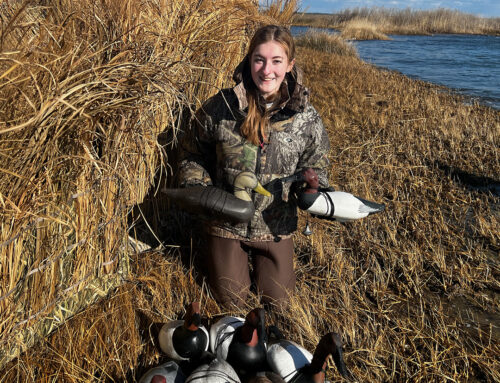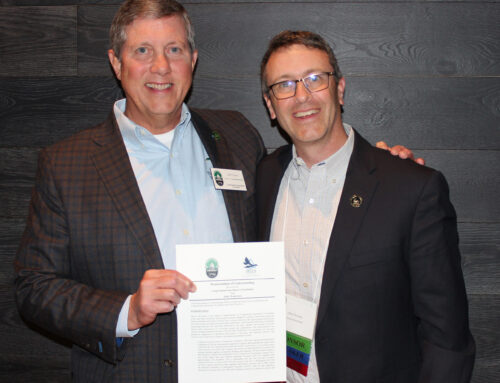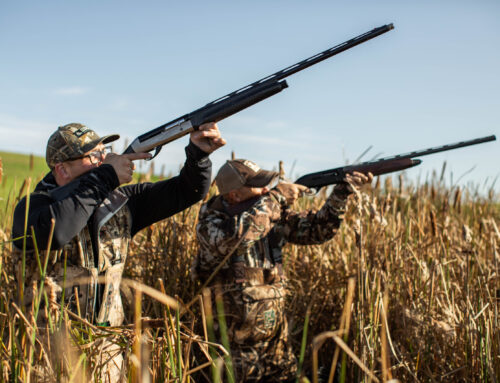Delta Chapter’s Veterans Hunt Produces Radio-tagged Brant

A Navy veteran who volunteers for Delta’s Middle Susquehanna River Chapter had an unforgettable experience.
The sun shone brightly on a surprisingly mild morning early last February, and little wind whipped the New Jersey coast. Perfect weather for waterfowling at the underrated destination? Perhaps not, but optimism remained high among the six military veterans hosted by Delta’s Middle Susquehanna River Chapter of Millersburg, Pennsylvania.
“We felt it was shaping up to be the perfect day, and the weather allowed everyone to remain comfortable,” said Randy Smith, 58, a Navy veteran and volunteer for the Middle Susquehanna River Chapter. “The guides set out the decoys without any tangles, we settled into the blinds, and it was just one of those mornings where everything goes smoothly.”
Their goal: Atlantic brant, a dream species for many hunters. Breeding in remote arctic Canada, nearly 90 percent of the total population winters along the coasts of New York and New Jersey.
Action came swiftly. One group limited within the first hour, so Smith and his son Matt, a Marine, were moved to the hot blind. A flock of brant soon coasted across the spread. Randy Smith rose, fired and dropped a mature goose to the surf. He was elated, sure, but when the guide’s retriever placed the brant in the blind belly-up, pandemonium resulted.
“Our guide Colby started freaking out, ‘Who shot this? Who shot this?’” Smith recalled. “He was so excited I thought I’d won money or something.”
 Smith was shown that the goose sported a red-and-white tarsal band on one leg and a standard metal band on the other. However, as he hoisted the bird for a photo, he realized it wore an additional accessory: a backpack-style GPS transmitter, similar to those Delta Waterfowl is attaching to mallards, wigeon and teal in its Lower Mississippi Dabbler Tracking Project.
Smith was shown that the goose sported a red-and-white tarsal band on one leg and a standard metal band on the other. However, as he hoisted the bird for a photo, he realized it wore an additional accessory: a backpack-style GPS transmitter, similar to those Delta Waterfowl is attaching to mallards, wigeon and teal in its Lower Mississippi Dabbler Tracking Project.
“Colby again went ballistic,” Smith chuckled.
Smith later discovered that the tarsal band had a geolocator attached: a tiny device that tracks course data and can even reveal if a bird attempted to nest (for that reason it’s typically placed on female waterfowl only). The research is being conducted by the New Jersey Division of Fish and Wildlife to better understand the migration and breeding success of Atlantic brant. Of note, Delta Waterfowl’s Dr. Chris Nicolai — a leading expert on geolocators — was consulted for the study and loaned five dozen of his hand-carved brant decoys for the trapping process.
Smith was soon in touch with New Jersey’s state waterfowl biologist, Ted Nichols.
“He said, ‘That bird’s worth a lot of money. Would you mind sending it back, please?’” Smith explained.
Smith of course complied, and was sent a replica of the radio. (Side note: Given the expense and hardship of attaching GPS backpacks and other tracking devices to ducks and geese, biologists encourage hunters to avoid intentionally targeting them.)
Several more brant were taken as the hunt wound down, including a banded goose shot by Smith’s son, Matt. Smith’s son, Jonathan — also a Delta volunteer — guided veterans in a blind nearby.
“It was a neat experience getting that brant and learning about the research,” Smith said. “But the coolest thing for me is that Jonathan was guiding — he’s the one who took me duck hunting for the first time, and it’s still one way we enjoy getting together — and it was my first time waterfowling with Matt.”— Kyle Wintersteen
To become a member of Delta Waterfowl today, call (888) 987-3695 or visit deltawaterfowl.org/memberships.






Leave A Comment